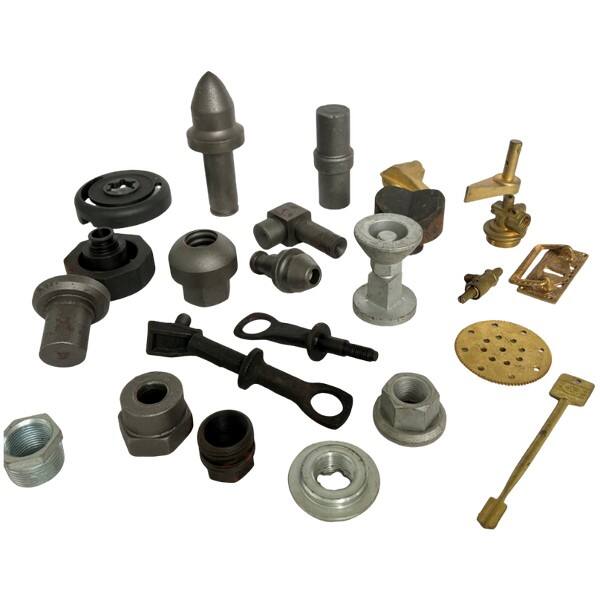Iron sand casting begins with the production of a mold - this is basically a container used to fashion iron into its desired shape. The mould is produced using a pattern. A pattern is basically a template of the shape you want to create. Several times that pattern is arranged in the mould box which filled with sand. The sand is compacted around the pattern to form a mold in the shape of the pattern. Using packed-in sand holds the exact shape from which we cast/pattern without a mold so when you remove your pettern an empty space (matching inverse of pattern) is left in the clay.
When the mold is ready, it's time to prepare to melt the iron. A blast furnace, a special oven, heats iron to make it into liquid. This liquid iron is poured into the mold, through a special path called sprue. The sprue is a funnel as it helps guide the iron in the proper location. In the end, when it cools down and gets harded,It starts taking the shape of that mould. This is it, the most exciting moment (seriously!): very soon this liquid iron will become a solid.
Iron sand casting has some great aspects. To begin with, it is Schexy because 1) not very expensive. For that reason this, a great alternative for lots of organization growth pressing iron components. This also helps it to make larger & heavier objects as the molds can be designed according to these bigger sizes too. The flexibility of iron sand casting makes it ideal for use in an array of different industries.
But at the same, there are some cons going along with this process. The big problem is, however that you can only use sand molds once. Which means it is probably not the best method for mass-producing copies of an item. If a company is trying to produce many of the same part, they are going ot have to figure another way. This also takes a lot of energy to heat and melt the iron, which can prove to be less environmentally friendly than other approaches. It is something that a lot of industries are striving to get better at.

Choosing the correct sand for iron casting is crucial to produce a quality product. The sand that the molds are made of must be able to withstand such high temperatures in order not to melt, eventually becoming unable to transform into anything. This includes several types of sand including silica, green (or slightly moist,) and resin-coated (which helps the mold keep it's shape when removed from a pattern or core).

Silica sand is the most commonly used type for iron casting. Its very small, globular grains exhibit excellent resistance to high temperatures during the casting process. Green sand is another option. It is formed by mixing silica sand with water, and another type of clay that functions as an adhesive. Resin coated sand is a kind of new type foundry aggregate with suitable proportion and high intensity, still can be used in hot or humid condition.

When cast iron is smoothed, this ensures that all rouged places have been made smooth; you cannot achiewve the same results without grinding. It is somewhat similar to giving the surface a bit of polish so that it looks nice and clean. Sandblast is a process which uses the high-pressure jet of sand to smooth the surface area and also remove any excess items based on it. This provides a much better look of the final product. Another aspect important is the heat treatment. It can alter the features of iron, by doing so, making it a better opportunity in terms of long-lasting durability and being put to work greatly.
iron sand casting, high quality and quality delivery for every client to bring the best experience.
The principal iron sand casting of the company is forging and casting. The main production of various auto parts, fasteners can be customized according to specifications of the customers.
Yunlong Wanhao Machinery iron sand casting been established for more than 21 years. It is a supplier to large businesses throughout the year, and is proficient in the manufacturing of machines.
iron sand casting inspections will be carried out on each product to ensure its quality.